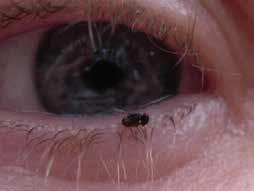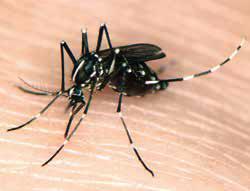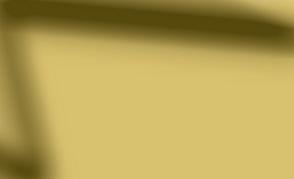
































































































































































































































































































































































































































































































































































































































































































































This fact sheet is for structural pest control operators. It provides guidance on how to comply with the monthly job report (MJR) rule of the Georgia Structural Pest Control Act.
What does the rule require?
Structural Pest Control Companies operating in the category of wood-destroying organisms (WDO) are required to create Monthly Job Reports (MJR)
What is a Monthly Job Report?
A document required under Rule 620-6-.06 that reports completed pest management service jobs in the category of wood-destroying organisms.
SPCC Monthly Job Report:
This SPCC Monthly Job Report was developed as a tool to assist in compliance with the requirement of Rule 620- 6-.06. Other forms can be used but must include the required information.
Request for records:
GDA may request Monthly Job Reports for any portion of the last two years. If you receive a request for these records, the records must be provided to GDA in a reasonable amount of time.
What is a WDO Job?
A WDO Job is a control measure meaning the application of all measures for the purpose of controlling termites, powder post beetles, wood boring beetles, wood destroying fungi and any other wood destroying organism in structures and adjacent outside areas.
How often are these reports required to be made?
The reports must be compiled each month and maintained by the designated certified operator.
What jobs must be listed on Monthly Job Reports?
• WDO jobs completed
• Official Georgia Wood Infestation Inspection Reports
• New WDO contracts
What must be included on the Report?
• Name of the property owner
• Complete address of the structure
• WDO pest
• Type of structure
• Date of treatment or inspection
• Official Waiver Form (if applicable)
• Official Georgia Wood Infestation Inspection Report
How long must MJR’s be maintained?
Monthly Job Reports should be retained by the company for two (2) years from the report period.
Can an abbreviation key be used to simplify the MJR?
An abbreviation key can be used for the report. The abbreviation listed for each job must match the abbreviation in the key, for accuracy.
How should I document Pre-construction soil applied termite treatments on Monthly Job Reports?
Pre-construction soil termite treatments should be documented on Monthly Job Reports each time a termiticide is applied.
Can other information be included on the MJR?
Additional information can be included on the MJR to assist with business operations.
SPCC: 25-03 Issued 4/8/25


















































































Online Resources Laws & Regulations
Georgia Structural Pest Control Commission Also listed at www.agr.georgia.gov/structural
If further assistance is needed, contact the Structural Pest Control Division at (404) 656-3641 or pest@agr.georgia.gov
The Georgia Structural Pest Control Commission and Georgia Department of Agriculture have issued this guidance document to help pest management professionals comply with the Rules of the Georgia Structural Pest Control Act. This document does not include all regulatory requirements. Refer to the complete Rules of the Georgia Structural Pest Control Act for all rules and regulations.
SPCC: 25-03 Issued 4/8/25












































Fruit flies (Drosophilidae): The most common species have red/orange eyes, but not all fruit fly species have red/orange eyes. Fruit flies often hover around and just above food (most often decomposing vegetable matter) prior to landing. Flies are 1/8 in.. Habits: Feed mainly on decaying vegetable matter, compost, rotting fruit, etc. Often found around salad bars and restaurants where vegetable matter and juices collect. Also called vinegar flies, since vinegar (acetic acid) is a decomposition product of some rotting vegetable matter. Interventions: Find larval fly feeding site(s) and clean or otherwise throw away rotting fruit or vegetable matter. Remove garbage, including the plastic liner, and other refuse at least twice per week. Thoroughly clean all garbage receptacles at least twice per month. Might be confused with: humpbacked flies, fungus gnats, moth flies.
Fungus gnats (several families represented; mostly Sciaridae): Small to medium sized flies often with smoky black wings. Y-shaped wing venation is characteristic of Sciaridae. Habits: Often found in overwatered plants indoors or in otherwise wet conditions. Interventions: Find larval fly feeding site(s) and clean or otherwise dry out. If desired, apply a soil drench with an appropriately labeled liquid insecticide. Might be confused with: mosquitoes, fruit flies, humpbacked flies, moth flies.
Black soldier flies (larva) (Stratiomyidae): Strongly-segmented larva, 3/4 to 1 in., with two 1/16 in. protrusions from one end. Adult flies are rarely seen, but are 3/4 in. and appear wasp-like with two clear spots on the upper abdomen. Habits: In homes, larvae usually are found in the bathroom. Presence in the bathroom may be indication of sanitary (sewer drain or septic tank) problems because larvae feed in putrid, wet conditions. This insect also lays eggs and larvae develop in piles of damp organic matter such as compost piles. Like many fly species, larvae are known to wander well away from their breeding site into areas where they pupate. Interventions: Find the larval food source and address the problem by sanitation or moisture management. Sewer line exhaust pipes can be screened to prevent fly access. Might be confused with: adults look like wasps.
House flies (Muscidae: Musca domestica): The most recognizable of all fly species. Black, drab, 1/4 in., fast-flying, often numerous around garbage cans and related refuse areas. Habits: Breeds in garbage, trash, animal waste, and other organic refuse. Like most flies, they are found most frequently breeding in overly liquid or wet conditions. Often associated with unsanitary, unkept conditions, such as areas abundant in animal waste or human garbage/landfills. The term maggot is most commonly used in reference to this fly’s larval stages. Because flies are pushed by prevailing, local winds, their source may be from some distance away. Interventions: Proper sanitation and exclusion is an effective means of reducing fly numbers. Indoors, deploy and maintain sticky traps associated with attractive lights (commercial insect light traps) and/or the chemical attractant Z-9-tricosene. Be sure that indoor light traps are situated so that they cannot be seen by flies from the outside. There is no scientific evidence to support claims that a hanging bag full of water serves as a deterrent to house flies. Remove garbage and other refuse at least twice per week. Might be confused with: blow flies.
Eye Gnats (Chloropidae: Liohippelates spp.): In Georgia, this is the insect mostcommonly referred to as a gnat. Eye gnats are small (1/16 in.), annoying, relentless flies found from central to south Georgia and south of the commonly referred to “gnat line”, or Fall Line (that natural, historic shoreline of the Atlantic Ocean running from Columbus, through Macon, and to Augusta that separates Georgia’s northern Piedmont [clay soils] from its southern Coastal Plain [sandy soils]). Habits: Eye gnats are attracted to fluids secreted by the eyes, nose, ears, other natural orifices, and open wounds where they hover around, relentlessly and annoyingly. They eventually can consume fluids (protein) from these sources that they need for egg production. Although they do not bite, eye gnats are known to mechanically transmit, on their body parts, the bacteria that leads to human acute conjunctivitis, or pink eye. Eye gnats prefer to lay eggs just below the surface of moist, loose, well-drained sandy soils









with fresh organic matter present (cut grass, hay, crop stubble, manure, etc.). Due to their small size eye gnats can be wind-blown from their breeding site. They are not very strong flies, and when flying remain close to the ground. Interventions: Like all flying insect pests, it is best to find the eye gnat’s breeding source and address the problem there. Admittedly, this may be difficult because breeding sites are often unknown. At potential breeding sites, sanitation is important. Reduction of organic debris and drying the habitat are recommended at these sites. To deal with existing eye gnat problems, physical barriers such as screens should be in good shape. The insect repellent DEET may also provide temporary relief. Because eye gnats fly close to the ground, an 8-foot-tall screen fence reportedly excludes them. Trapping eye gnats, with raw eggs and water, may reduce their numbers locally. Spraying residual, contact insecticides is not recommended, but if they are applied should be directed to vegetation where adult eye gnats rest. Might be confused with: fruit flies, phorid flies, fungus gnats, black flies, numerous other small, flying insects.


Humpbacked flies (Phoridae): Also referred to as scuttle flies or coffin flies. Often scuttle about on the surface around and on infested materials. Humpbacked flies are about 1/8 in.. Habits: Often associated with dead and decaying animal or plant matter (e.g., dead insects, rotting potatoes), bacterial buildup in drains (drain and sewer scum) in bathrooms and kitchens, and in/around garbage cans. Interventions: Find and clean fly breeding site(s) and/or clean out drains. Make certain that the water trap in the drain line (especially common in less frequently used sinks) is filled—if the water trap dries out, flies and other pests that live in the drain lines will be able to enter the building. Remove garbage and other refuse at least twice per week. Might be confused with: fruit flies, moth flies, fungus gnats.
Midges (Chironomidae): Visual appearance like mosquitoes, but lack a proboscis and scales on their wings. Males with long, feathery antennae similar to male mosquitoes. Usually numerous. Habits: Midges are sometimes associated with polluted lakes and ponds, but always associated with water because larvae, referred to as bloodworms because of their red color, are aquatic and live on the floor of ponds, lakes, and other bodies of non-flowing water. Midges do not bite. In fact, adults are short lived and do not feed. They can, however, become a major nuisance because of their strong attraction to lights. Adult midges typically emerge from their aquatic habitat in large numbers and are attracted to light-colored surfaces, such as the sides of nearby buildings with bright lighting. Interventions: To address the nuisance aspect of adult midges on structures, keep lights off during mass emergences from nearby bodies of water and/or deploy fans to discourage midges from settling on walls and other surfaces where they are not wanted. If desired, apply a localized treatment with an appropriately labeled residual spray to the side of buildings, especially around lights, where midges are most abundant. Never, however, apply a pesticide near or directly to water. Many residual, contact, acute pesticides are highly toxic to fish and other aquatic life – including those available in the homeowner market. Read and follow label directions prior to applying any pesticide spray. For a more permanent solution, the source of the problem must be addressed by application of a larvicidal product to areas where larvae are found in the aquatic substrate. One product specifically developed for this purpose is Bactimos PT. This granular bait product contains a bacteria (Bacillus thuringiensis supsp. israelensis) that must be eaten by the larvae. It is therefore applied directly to aquatic, larval habitats where it sinks and is later consumed by the midge larvae. Application and use of Bactimos PT must be conducted by a licensed professional. Other larvicidal products, applied directly to water, contain the insect growth regulator methoprene. Products containing methoprene are known to disrupt normal insect developmental physiology. Might be confused with: mosquitoes.
Blow flies (Calliphoridae) and flesh flies (Sarcophagidae): Some species referred to as bottle flies (blue or green). Large, robust, fast-flying flies, 1/4 to 3/8 in., commonly shiny and with metallic blue, green, copper, or gray coloration. Flesh flies are strongly bristled, some have stripes on their pronotum (upper thorax), and some have large, reddish-brown eyes. They resemble house flies in their flying behavior. Habits: Flies


are attracted to and breed in recently dead and decaying animals and animal waste. When suddenly present in large numbers, and when present indoors (typically at windows sills), highly suggestive of a dead animal indoors (e.g., attic, crawlspace, wall void, fireplace, etc.). Interventions: Find dead animal and remove it. Maintain window and door screens to prevent entry into the house. Remove garbage and other refuse at least twice per week. Might be confused with: house flies (especially the maggots).
Black flies (Simuliidae): Black flies are small, up to 1/16 in., biting flies that require a blood meal to produce their full complement of eggs. They are a nuisance because they bite and swarm about the head and face. Habits: Black fly larvae are aquatic and require flowing water to develop. There are more than 240 species in North America alone. Adults are notoriously strong fliers; movement of 20 or more miles has been documented. Adults are day active. Female flies lay 200–500 eggs in or near flowing water, and larvae attach to substrates in the flowing water where food particles (detritus, algae, bacteria, and small invertebrates) are filtered from the flowing water. Larvae typically develop through 7 instars over 10 days to many months depending on the black fly species and environmental conditions, especially water temperature. Pupation occurs on the larval substrate and the adult flies emerge in the following days to months, depending on species and environmental conditions. Adults emerge from spring to late summer, mate, and begin laying eggs. Blood is required for the protein it provides for developing eggs. Females live about a month and may lay several clutches of eggs; males do not bite and die soon after mating. Interventions: Control of black flies should be left to a professional. One of the more difficult aspects of black fly control is determination of their larval development site(s). Adult females can be found miles from flowing water. Might be confused with: sand flies, thrips, mosquitoes, eye gnats
Deer flies (Tabanidae: Chrysops spp.): Adult deer flies are very fast fliers, and very difficult to swat or catch. They are about ½ in., yellow to black, with stripes on the abdomen and thorax, and mottled wings with dark patches. They have large, green/ blue, iridescent eyes because their hunting is primarily visual. Habits: The presence of deer flies is associated with a nearby marsh where the larvae develop in wet organic matter. Deer fly adults are a nuisance because they bite. They use sight to locate a host, and are readily attracted to moving, dark objects. Only female flies bite because they need protein (blood) to produce their eggs. The bite from a deer fly is quite painful. When biting, deer fly mouthparts cut into skin in a saw- or scissor-like manner, resulting in bleeding at the wound site. During biting, flies inject an anticoagulant to keep the blood from clotting, then suck up the pooling blood with their sponge like mouthparts. In the spring/early summer, overwintered larvae resume development, pupate, emerge as adults after 2–3 weeks, and then mate. Adults live for just 1–2 months. When the female lays eggs, she deposits several hundred on a horizontal surface—usually aquatic vegetation—above water or wet soil. After a week, eggs hatch and the larvae fall into the water, develop through 6–9 larval stages, overwinter as larvae and the following spring the process repeats. Interventions: Control is difficult because of their breeding habitat. Without manipulating the marsh habitat (removing or reducing aquatic vegetation in the early spring), there are no good methods for reducing deer fly bite rates. Avoiding bites by wearing long sleeves and long pants and using skin- or clothing-applied repellents (especially to hats) is the best approach. Sticky traps and funnel traps will attract and kill some adults. Because adults are attracted to dark, moving objects, a classic deer fly trap consists of hanging a round, black ball, coated with sticky glue, from a tree, or below a funnel trap. When the ball moves, it attracts flies that get stuck in the glue. Insecticide use is not recommended. Might be confused with: mosquitoes, house flies, stable flies.
Mosquitoes (Culicidae): Delicate, long-legged, 1/8 to 1/4 in. flying insect. Distinct buzz from flying mosquitoes is the sound of their wing beat. The Asian tiger mosquito (Aedes albopictus), one of 60-plus mosquito species in Georgia, has distinct black and white legs, while other species are dull brown. Habits: Female mosquitoes bite because








they require blood to produce the protein needed for egg production. Males of most species feed on nectar from flowers, but do not bite humans. Like other blood-feeding arthropods (ticks, fleas, and bed bugs), mosquitoes are attracted to carbon dioxide, as it is indicative of a warm-blooded host. Some people are indeed more attractive to mosquitoes due to chemicals on the skin that make them more attractive than other people. Mosquitoes require standing water for larval development. The adults are common in shaded, wind-protected areas with abundant vegetation (low growing ground covers and tall grass). Many human-biting species are most active at dusk and dawn. Interventions: The larval stage (wriggler) is least mobile and most vulnerable stage to any management strategy. Eliminate standing water, clean gutters and remove containers that can hold rainwater. Follow recommendations in the section Proactive Pest Management. Apply floating briquettes that contain Bti (Bacillus thuringiensis subsp. israelensis) to kill the larvae in standing water. Avoiding bites by wearing long sleeves and long pants and using skin- or clothing-applied repellents (especially to hats) is the best approach. See EPA website on repellents at https://cfpub.epa.gov/oppref/insect: Find the Repellent that is Right for You. For more information see University of Georgia Extension Circular 782, Stinging and Biting Pests, at https://extension.uga.edu/publications.html. Might be confused with: midges, crane flies.
Drain flies (Psychodidae: Psychoda spp.): Also referred to as moth flies. Oblong or oval, they appear moth-like, and are about 3/16 in., with fuzzy wings. Larvae are up to ½ in.. Habits: Commonly found in bathrooms (breeds in scum in drains, showers, overflows, toilet bowls, etc.). Adults rest motionless on walls until disturbed, and then fly well. Need wet conditions to breed. When toilets have gone unflushed for an extended period, moth flies may lay eggs in the toilet tank, and larvae can be found there. When the toilet is finally flushed, larvae can make their way into the toilet bowl, where they are discovered. Interventions: Clean the inside of the drain of all scum and detritus using a mild cleanser and a bristled brush. Never pour insecticides into drain. Pouring bleach into drains is not effective. Make certain that the water trap in the drain line is filled—if the water trap dries out (especially common in less frequently used sinks), flies and other pests that live in the drain lines will be able to enter the building. To help determine whether a particular drain is infested, invert a clear cup over the drain. If flies emerge from the drain, they will be trapped by the cup and can be seen. Might be confused with: fungus gnats, humpbacked flies, fruit flies, and small moths.
Hover flies (Syrphidae): Some adult hover flies closely resemble, or mimic, yellowjackets, and because they are fast flying, and the threat of sting from a yellowjacket is readily anticipated, getting close enough to the hover fly to realize that it is indeed harmless is unlikely. As such, when hover flies are encountered, they are often avoided because they are presumed to be a stinging wasp. Habits: Hover flies are harmless, highly beneficial insects. Adults are pollinators and can often be seen visiting flowers or feeding on the sweet honeydew produced by aphids and scale insects. The larvae of some hover flies are predatory on plant-eating aphids. Interventions: None needed. Hover flies are harmless, beneficial predators on aphids (plant pests) in the larval stage, and as adults serve as pollinators. They are all around beneficial. Might be confused with: yellowjackets.
Tiger bee fly (Bombyliidae: Xenox tigrinus): 1 in., robust, mottled, fast-flying insect often seen in late spring/early summer hovering around and frequenting areas where carpenter bees have been, or are, active; wing coloration is light and dark mottling, thus the name tiger. Bee flies generally have a long proboscis and large eyes, and are sometimes mistaken for horse flies or carpenter bees. Habits: Bee flies mimic bees, and other large flies such as horse flies, in flight because they are fast, and details of their appearance are difficult to see. Tiger bee flies are true flies and are harmless. The tiger bee fly is a natural enemy of carpenter bees and is why they are most often seen flying furiously around areas where carpenter bees have been or are active. Interventions:
None needed. Do not kill tiger bee flies. They are harmless. Because they are natural enemies of carpenter bees, and thus highly beneficial, they should be left alone. Might be confused with: carpenter bees, horse flies, large wasps and bees.
This group of insects contains some of the most beneficial insects known. Besides the honey bee, the Hymenoptera also contains many species that are parasites and predators of highly destructive insect pests. However, there are also Hymenoptera that are considered pests. Some sting and can create a life-threatening medical condition called anaphylaxis in people allergic to that particular venom. Generally, all mature, adult members of this order have four membranous wings, with the hind wings smaller than the front wings.





























































































































































































































































































































































